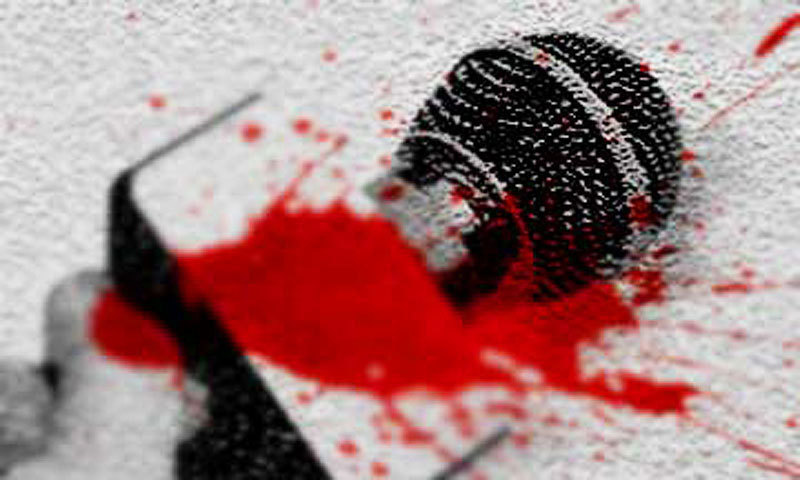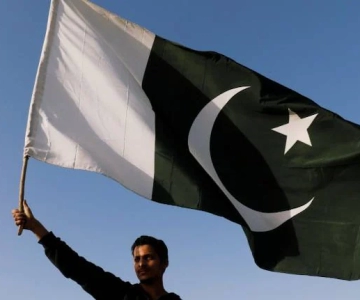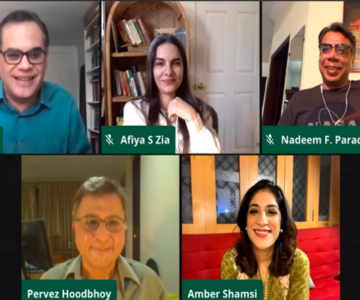Why, one would ask, is killing the only answer for disagreement?
To say that Pakistani journalists are under attack is an understatement. They are lucky if not assailed or killed.
Beyond the veneer of prime time television shows that many think constitutes journalism, there are thousands of media workers at risk. They are endangered and pressured by state agencies, political parties, militant networks and mafias, which share a common goal: suppressing information and muzzling those who dare to dig facts.
Comrade Irshad Mastoi and his two colleagues join the ranks of slain journalists who were targeted for their profession; this is unacceptable in a country that is ostensibly governed by a constitution.
I never met Mastoi but followed him on social media and occasionally, we communicated. His views were dangerous; and he never refrained from expressing them.
Mastoi was a working journalist for 14 years and before his murder was also the Secretary General of the Balochistan Union of Journalists (BUJ). The killers, who remain at large, shot him dead along with an intern Abdul Rasul and an accountant of the news agency bureau that Mastoi was heading in Quetta. Mastoi was also affiliated with the ARY News and frequently wrote for vernacular and English papers.
That the murderers could enter into a news agency office located in a busy area of Quetta speaks volumes for the impunity with which such attacks are carried out.
Mastoi was 34 and his associate Rasul was a student at the Media and Journalism Department of the University of Balochistan.
What is the message for journalists and those who aspire to adopt this profession?
Pretty dire.
Pakistan’s treatment of journalists is shoddy at best. With the outsourcing of geographical control to militant networks, several journalists have been attacked in Pakistan’s conflict areas, with Balochistan topping the list.
Global media watchdog, Reporters Without Borders (RSF) in its 2014 report highlighted that Pakistan had become one of the most insecure countries for journalists.
The 2014 report of the Committee to Protect journalists (CPJ) stated that 44 journalists were killed in Pakistan during the last one decade. CPJ has also documented that an additional 12 journalists were killed in unclear circumstances during the same time. In terms of impunity the country ranks ninth in the 2014 impunity index issued by CPJ.
In 2013, eight journalists were killed and this year the toll rises as Mastoi was the sixth to be silenced.
Prior to his killing, Mastoi was tweeting about the ongoing assault on Pakistan’s democracy. Earlier, he had been writing about the plight of Balochistan, its besieged population and the utter failure of state agencies to discharge their duties.
His writings highlighted the thorny issue of enforced disappearances in the province, which has invoked a severe response for many other journalists too. The most well known case is probably that of Jang Group’s Hamid Mir. He has joined the longish list of traitors who dare to question the policy on Balochistan.
There is a dark history and an equally murky present when it comes to journalists working in Balochistan. Since the reawakening of the Baloch separatist movement after the murder of Nawab Akbar Bugti in 2006 and the subsequent security operations, the security situation in the province has deteriorated – with journalists being at the center of this conflict.
A 2013 CPJ report Roots of Impunity has documented almost all the attacks on journalists throughout Pakistan. It makes for a sobering read and highlights the perils of working as a journalist. But it is Balochistan where a shamefully long list of murders alarms and more so as almost all remain unpunished.
In 2008, Chishti Mujahid, a longtime columnist associated with Akhbar-i-Jahan was shot dead. Reportedly, the banned Baloch Liberation took the responsibility as they viewed Mujahid to be against the Baloch nationalist cause.
In 2009, Wasi Ahmad Qureshi of Daily Azadi and Balochistan Express was shot at in Khuzdar, Balochistan. After battling for his life for a few days he died at a local hospital. It was said that the separatists launched the attack but no evidence to that effect came into public domain.
Mastoi’s death reminds one of another gruesome murder that we have forgotten. Lala Hameed Baloch working for Daily Intikhab was killed in 2010 and his body was found near Turbat. He was first missing for days and was reportedly abducted on his way to Gwadar.
Why, one would ask, is killing the only answer for disagreement?
Intikhab was also sympathetic to the Baloch National Movement, but with the toleration of so many anti-state insurgents, the selective treatment of certain groups shows that some insurgents are more equal than others.
Last year, the courts had stopped journalists from reporting on the banned groups in Balochistan. This only created more worries for the local reporters as they face pressure to project the views of the separatists. For years, the authorities have allowed the transmission of views of other banned outfits such as the Pakistani Taliban and the violent sectarian networks. This is why such strictures from the state compound the situation and raise questions on its intent and policy.
Sectarian outfits have also shaken Balochistan with their open hate mongering and acts of violence, which have targeted Hazara Shias and Zikris in recent days.
A suicide bombing in Quetta killed Arif a cameraman from a TV channel in April 2010, while Ejaz Raisani from Samaa TV also died in a similar suicide attack in September. Raisani was reporting when a suicide bomber blew himself up at a Shia rally. The explosion left 70 people dead and 200 injured. A driver, Mohammad Sarwar, working for Aaj TV also lost his life.
In 2011, lyas Nizzar, affiliated with Darwanth was found dead in Pidarak. He had been missing earlier. In the same year, Muneer Shakir of Online News Networkand Sabzbaat TV was also killed in Khuzdar ironically on August 14th, Pakistan’s Independence day. Thirty-year-old Shakir was also sympathetic to the Baloch cause according to his colleagues. In Turbat, Abdost Rind a freelance reporter – was also killed by unknown assailants in 2011. Once again, he was considered an activist for the Baloch nationalists cause.
Razzaq Gul of Express TV was tortured and killed in 2011. Javed Naseer Rind an editor and columnist with Daily Tawar was kidnapped and a few months later was found dead in December 2011.
In 2012, Abdul Qadir Hajizai working for WASH TV was shot dead in Quetta on May 28, the anniversary of Pakistan’s detonation of its nuclear bomb in 2008. The Baloch Liberation Front, later claimed responsibility accusing Hajizai of being an informer.
Also in 2012, Abdul Haq Baloch of ARY Television was murdered in Khuzdar. Reportedly, he was on the hit list of a militant group for being an advocate of the missing person’s case pending before the courts. Another journalist Rehmatullah Abid, a reporter for Dunya News and daily Intikhaab was also murdered in Panjgur during 2012.
Those intimidated, harassed are not listed here.
Not being dead is a victory in today’s Balochistan if you are a journalist. Worse, there is little or no hope of prosecuting the killers, let along sentencing them.
Most deaths of journalists go unpunished as a norm. This is the price our media has to pay for keeping the torch alive.
Mastoi and the long list of slain journalists will continue to haunt Pakistan’s future.
Irshad Mastoi (@IrshadMastoi) February 16, 2013



